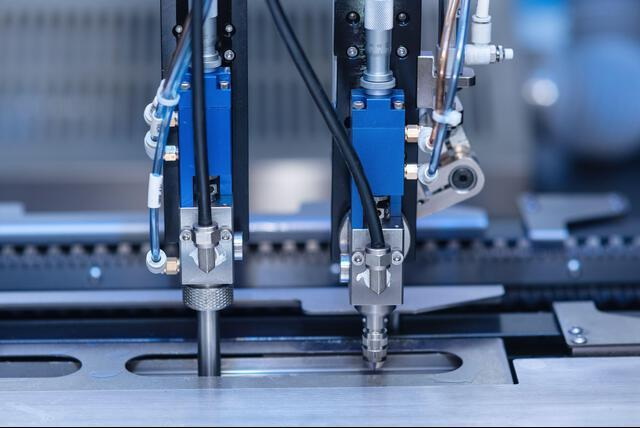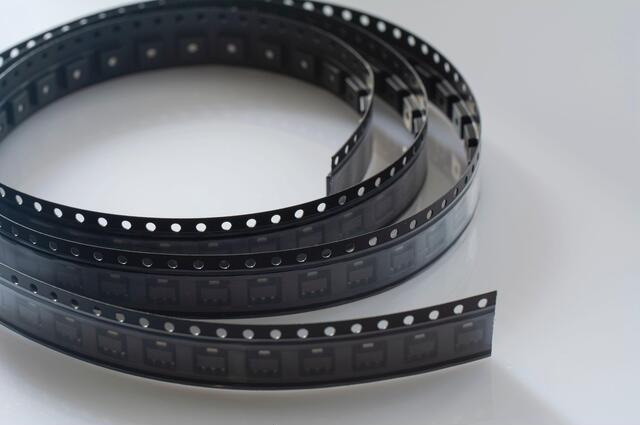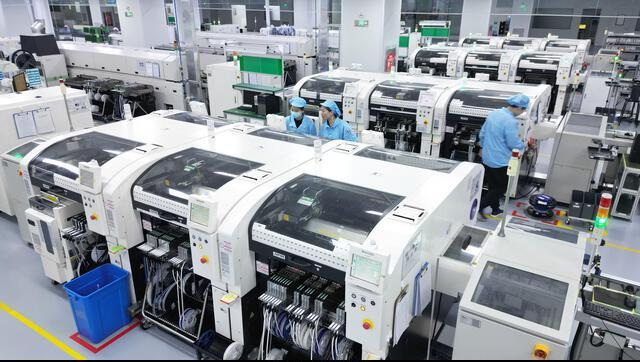Content Menu
● Understanding Surface Mount Technology (SMT)
>> Historical Background
● Key Features of SMT
● Advantages of SMT
● Disadvantages of SMT
● The SMT Process
>> 1. Solder Paste Application
>> 2. Component Placement
>> 3. Reflow Soldering
>> 4. Inspection
● Applications of SMT
● Trends Influencing SMT
● Conclusion
● FAQ
>> 1. What is the difference between SMT and THT?
>> 2. What types of components are used in SMT?
>> 3. Is SMT suitable for low-volume production?
>> 4. How does reflow soldering work?
>> 5. Can I repair surface-mounted devices easily?
● Citations:
Surface Mount Technology (SMT) is a revolutionary method used in the assembly of electronic components onto printed circuit boards (PCBs). This technology has transformed the electronics manufacturing industry by enabling the production of smaller, more complex devices at a lower cost and with greater efficiency. In this article, we will explore the fundamentals of SMT, its advantages and disadvantages, the SMT process, its applications, and its significance in modern electronics.

Understanding Surface Mount Technology (SMT)
SMT is an assembly technique where components are mounted directly onto the surface of a PCB rather than being inserted through holes as in traditional Through-Hole Technology (THT). This method allows for a denser arrangement of components, which is crucial for modern electronic devices that require compact designs.
Historical Background
The origins of SMT can be traced back to the 1960s when IBM first developed it for small-scale computers. However, it wasn't until the 1980s that SMT gained widespread adoption as manufacturers recognized its potential for reducing production costs and improving efficiency. By the 1990s, SMT had become the standard method for assembling high-tech PCBs.
Key Features of SMT
- Increased Component Density: SMT allows for more components to be placed on a PCB due to the absence of drilled holes. This leads to smaller and lighter circuit boards.
- Automation: The SMT process can be highly automated, utilizing machines to apply solder paste and place components accurately and quickly. This reduces labor costs and increases production speed.
- Versatility: SMT can accommodate various component types, including passive components like resistors and capacitors, as well as active components like microcontrollers and integrated circuits.
- Improved Performance: Components mounted using SMT typically exhibit better electrical performance due to reduced parasitic capacitance and inductance.
Advantages of SMT
1. Cost Efficiency: The automation in SMT reduces labor costs significantly. Additionally, smaller component sizes often result in lower material costs.
2. Higher Production Rates: Automated processes allow for faster assembly times compared to manual methods used in THT.
3. Compact Designs: The ability to mount components on both sides of a PCB enables manufacturers to create smaller devices without sacrificing functionality.
4. Enhanced Reliability: SMT connections tend to be more reliable due to better soldering techniques and reduced mechanical stress on components.
5. Flexibility in Design: Designers can create more intricate circuit layouts without being constrained by the need for through-holes.
Disadvantages of SMT
1. Complexity in Repair: Repairing or replacing surface-mounted components can be more challenging than through-hole components due to their size and placement.
2. Thermal Sensitivity: Some SMT components are sensitive to heat, which can lead to damage during soldering if not managed properly.
3. Initial Setup Costs: While operational costs are lower, the initial investment in automated machinery for SMT can be high.
4. Component Size Limitations: While smaller components are advantageous for space efficiency, they may pose challenges when dealing with larger heat sinks or specialized form factors required by certain devices.
5. Repair and Rework Challenges: The diminutive size and densely packed nature of SMT components make manual repairs complex and often require specialized tools[6][7].
The SMT Process
The SMT process involves several key steps that ensure accurate placement and soldering of components:
1. Solder Paste Application
The first step involves applying solder paste onto the PCB using a stencil or printer. The paste consists of tiny metal particles mixed with flux, which helps with soldering during assembly.
2. Component Placement
Once the solder paste is applied, the PCB is fed into a pick-and-place machine. This machine picks up individual surface mount devices (SMDs) from reels or trays and places them onto the corresponding pads covered with solder paste. The average operating speed of these machines is approximately 50,000 components per hour[7].
3. Reflow Soldering
After all components are placed, the PCB goes through a reflow oven where it is heated gradually. This process melts the solder paste, creating strong electrical connections between the SMDs and the PCB pads as it cools down.
4. Inspection
Post-assembly inspection is crucial to ensure that all components are correctly placed and soldered. Automated optical inspection (AOI) systems are often employed to check for defects before final testing[8].

Applications of SMT
SMT is widely used across various industries due to its efficiency and effectiveness:
- Consumer Electronics: Smartphones, tablets, laptops, and other portable devices rely heavily on SMT for their compact designs.
- Medical Devices: Many medical instruments utilize SMT for their small form factors while maintaining high reliability.
- Automotive Electronics: Modern vehicles incorporate numerous electronic systems that benefit from SMT's space-saving capabilities.
- Industrial Equipment: Automation systems often use PCBs assembled with SMT for improved performance and reliability.
- Telecommunications: High-performance telecommunications equipment relies on SMT for efficient circuit design necessary for fast data transmission[2][4].
Trends Influencing SMT
As technology continues to evolve, several trends are shaping the future of Surface Mount Technology:
1. Miniaturization: The demand for smaller electronic devices drives innovation in component design and manufacturing processes[5]. Manufacturers are continually developing smaller SMDs that maintain functionality while occupying less space.
2. Automation and Robotics: The integration of advanced robotics into SMT processes enhances precision in assembly while reducing labor costs[8]. Automated systems streamline production operations significantly.
3. Advanced Inspection Technologies: As quality control becomes increasingly critical, sophisticated inspection technologies utilizing high-resolution cameras and machine learning algorithms are being developed[5]. These technologies ensure defect-free production runs by detecting issues in real-time.
4. Smart Manufacturing: The rise of Industry 4.0 promotes smart manufacturing practices where data analytics and IoT technologies optimize production processes[5]. This trend allows manufacturers to enhance efficiency further while reducing waste.
5. Sustainability Initiatives: As environmental concerns grow, manufacturers are seeking sustainable practices within their production processes[5]. This includes reducing waste generated during assembly and utilizing eco-friendly materials wherever possible.
Conclusion
Surface Mount Technology has fundamentally changed how electronic devices are designed and manufactured. Its ability to produce compact, efficient, and reliable products has made it indispensable in today's technology-driven world. While there are challenges associated with repairability and initial setup costs, the advantages far outweigh these concerns for most applications.
As technology continues to evolve, so too will SMT processes, leading to even greater efficiencies and innovations in electronics manufacturing. With trends like miniaturization, automation, advanced inspection technologies, smart manufacturing practices, and sustainability initiatives shaping its future, SMT will remain at the forefront of electronic assembly techniques for years to come.

FAQ
1. What is the difference between SMT and THT?
SMT (Surface Mount Technology) mounts components directly on the surface of PCBs without drilling holes, while THT (Through-Hole Technology) requires leads to be inserted through drilled holes in the PCB.
2. What types of components are used in SMT?
SMT uses various types of components including resistors, capacitors, integrated circuits (ICs), diodes, transistors, and connectors specifically designed for surface mounting.
3. Is SMT suitable for low-volume production?
While SMT is primarily designed for high-volume production due to its automation capabilities, it can also be adapted for low-volume runs with appropriate tooling adjustments.
4. How does reflow soldering work?
Reflow soldering involves heating a PCB with applied solder paste in an oven where the solder melts and then solidifies upon cooling, forming reliable connections between components and pads on the PCB.
5. Can I repair surface-mounted devices easily?
Repairing surface-mounted devices can be more challenging than through-hole devices because they are smaller and require specialized tools for desoldering and resoldering effectively.
Citations:
[1] https://www.sonicmfg.com/what-are-the-advantages-of-surface-mount-technology-in-pcba/
[2] https://www.marketsandmarkets.com/Market-Reports/surface-mount-technology-market-99662691.html
[3] https://www.linkedin.com/advice/1/what-benefits-challenges-using-surface-mount-technology
[4] https://geospacemfg.com/blog/smt-assembly-technology/
[5] https://www.verifiedmarketreports.com/blog/top-7-trends-in-surface-mount-technology-smt-equipment/
[6] https://rootsems.com/advantages-and-disadvantages-of-surface-mount-technology/
[7] https://vectorbluehub.com/smt-assembly
[8] https://www.mordorintelligence.com/industry-reports/surface-mount-technology-market
[9] https://shadowing.ai/mirror-room-question/How-do-you-handle-common-challenges-or-issues-that-may-arise-during-the-SMT-process-such-as-component-misalignment-or-br
[10] https://en.wikipedia.org/wiki/Surface-mount_technology




















